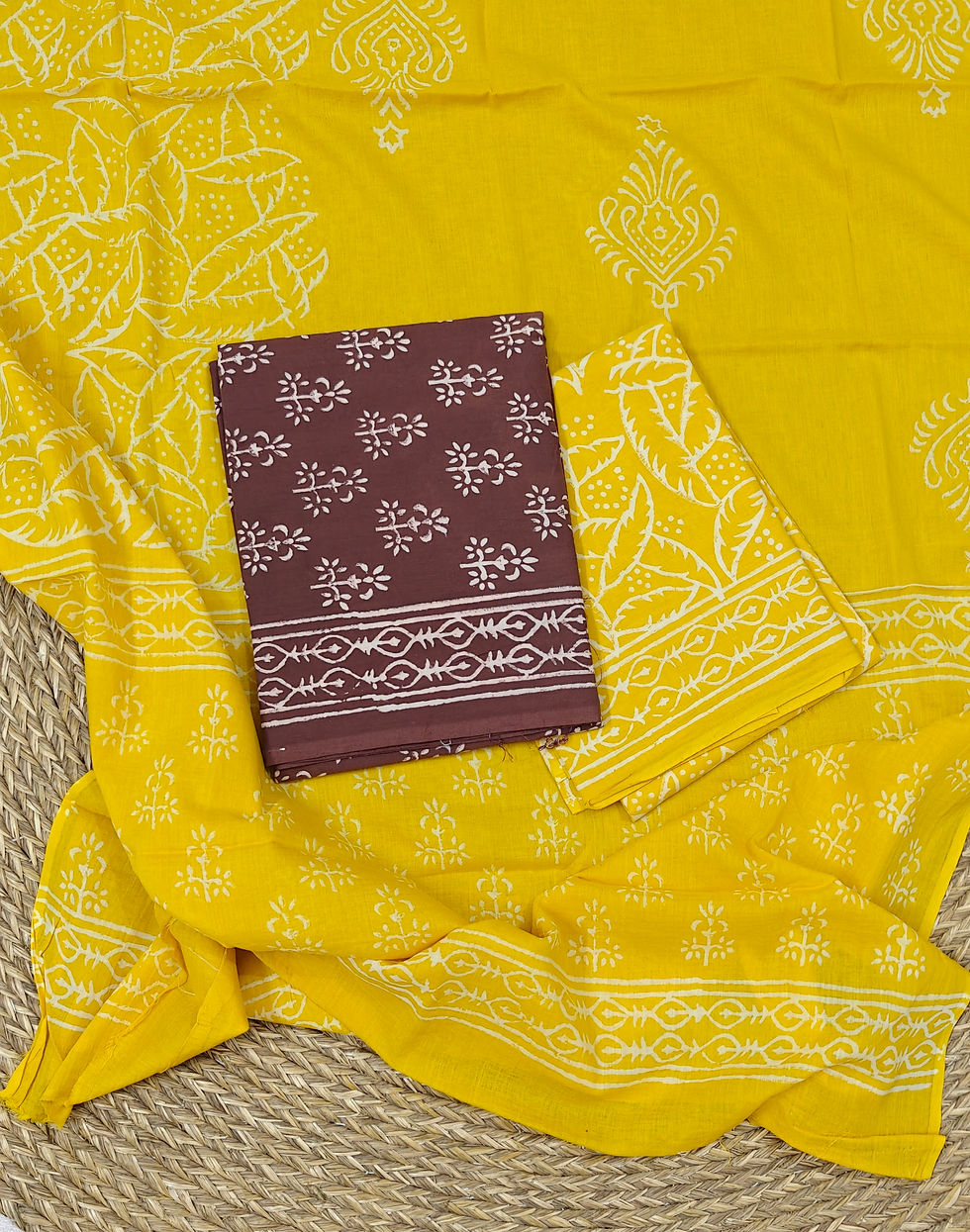Natural fabrics vs man made fabrics
- madhuethnics
- Mar 30
- 2 min read
Advantages of Using Natural Fabrics Over Polyester Fabric
In today's fast-paced fashion industry, the choice of fabric plays a crucial role in sustainability, comfort, and overall health. Natural fabrics such as cotton, linen, wool, and silk have been used for centuries, while polyester, a synthetic fiber, has gained popularity due to its affordability and durability. However, natural fabrics offer several advantages over polyester, making them a preferred choice for environmentally-conscious consumers and those seeking comfort. Here are some key benefits of using natural fabrics over polyester fabric:

### 1. **Breathability and Comfort**
Natural fabrics are highly breathable, allowing air to circulate and keeping the wearer cool and comfortable. Cotton, linen, and wool naturally wick moisture away from the skin, reducing sweat buildup and preventing discomfort. In contrast, polyester tends to trap heat and moisture, making it less comfortable, especially in warm climates.
### 2. **Eco-Friendliness and Sustainability**
Natural fabrics are biodegradable and decompose more quickly than synthetic materials. Cotton, wool, and silk come from renewable sources, making them environmentally friendly. Polyester, on the other hand, is derived from petroleum-based chemicals and takes hundreds of years to decompose, contributing to environmental pollution.
### 3. **Hypoallergenic Properties**
For individuals with sensitive skin, natural fabrics are a better choice. Organic cotton and linen are less likely to cause skin irritation or allergies. Polyester, being synthetic, often contains chemical residues from manufacturing processes that can trigger allergic reactions and skin sensitivities.

### 4. **Durability and Longevity**
While polyester is often marketed as a durable fabric, high-quality natural fibers like wool and linen are known for their longevity. Properly maintained natural fabrics can last for years without losing their texture or appeal, whereas polyester tends to degrade over time due to pilling and loss of elasticity.
### 5. **Better Temperature Regulation**
Natural fabrics adapt to body temperature, making them suitable for all seasons. Wool, for instance, provides warmth in the winter while remaining breathable in the summer. Polyester lacks this natural temperature regulation and can often feel overly warm or clammy.
### 6. **Less Environmental Impact During Production**
The production of polyester involves energy-intensive processes and the release of microplastics into water sources. Natural fabrics, particularly organic ones, are produced using sustainable farming practices with minimal chemical usage, reducing their overall environmental footprint.
### 7. **Aesthetic and Comfort Appeal**
Natural fabrics often provide a richer texture and more elegant drape compared to polyester. Cotton, silk, and linen garments tend to look and feel more luxurious, while polyester can sometimes appear less refined due to its synthetic sheen.
### Conclusion
While polyester remains a popular choice due to its affordability and durability, the advantages of natural fabrics in terms of comfort, sustainability, and health make them a superior option. Choosing natural fibers not only enhances personal comfort but also contributes to a healthier planet by reducing pollution and reliance on synthetic materials. As consumers become more conscious of their fashion choices, the shift towards natural fabrics continues to gain momentum, making them an investment in both style and sustainability.








Comments